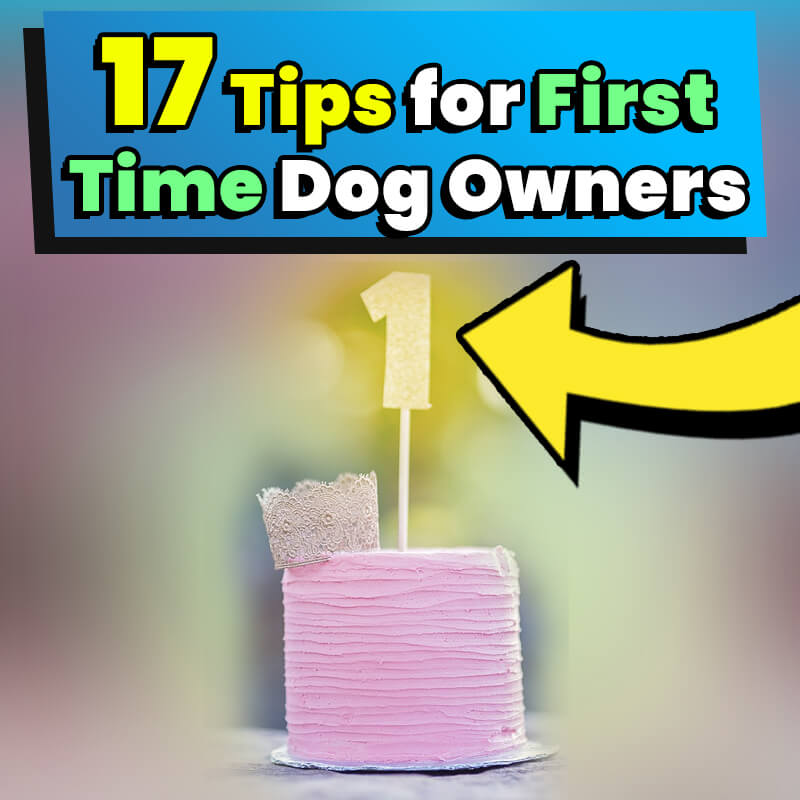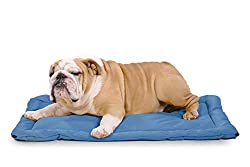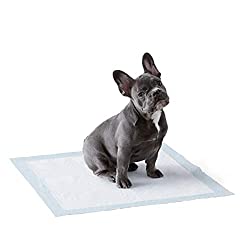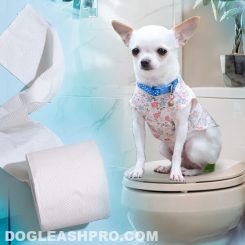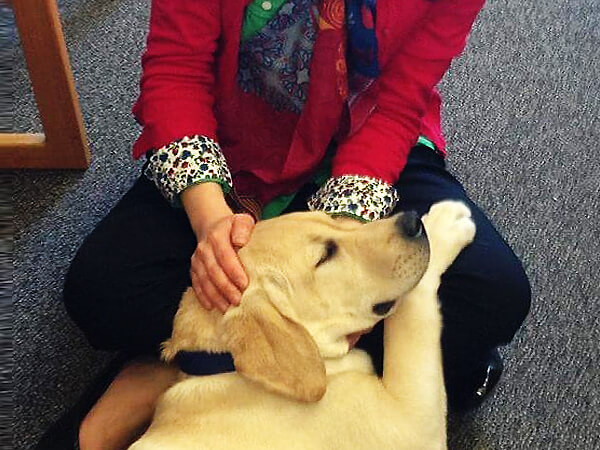
Are you a first-time dog owner? Congratulations! You found your new puppy or adult dog. Welcome to the fantastic world of dog ownership where it can be both challenging and rewarding.
The feeling of excitement, confusion, and anxiety may come all at once. You may want to know all about your little puppy and look into interesting dog facts or you may just want to enjoy the moment and take it one day at a time.
Some pet owners may already be prepared with essential doggy supplies and are looking to install wireless dog fences to keep their pooch safe and contained within their premises. If you’re not fully prepared, no worries.
Below we discuss 17 great tips for first-time dog owners. After reading this article, you’ll know what to expect when caring for your new pup and how to be a responsible dog owner. You’ll be rewarded with their lifetime of kisses, laughter, companionship, and happiness.
Table of Contents
1. Know what to expect for first time dog owners
Before your new puppy or dog comes home, plan ahead. List everything that’s needed. Start setting up your home so when they arrive home, everything is already set. Plan where you want to place the dog food bowl, dog crate, and doggy bed.
Think of ways to set your dog up for success. They may not know their way around the house so it’s important to set up a retractable dog gate to keep them out of certain rooms and areas. When I got my new puppy, we used Richell Convertible Elite Pet Gate (see product review below).
While you have a busy work schedule that would require a pet sitter or a dog walker? Planning ahead helps you get off to a good start and alleviate your worries. This way you feel less overwhelmed.
After your new dog comes home, there will be an adjustment period. The length of the adjustment period varies. For instance, if you’re bringing home an adult dog that has previously lived in a shelter, then it may take her longer to adjust to your home and new environment. If you’re bringing home a puppy, she may adjust easily and quickly.
It is totally natural for dogs to feel scared or overwhelmed when they are in a new home for the first time. Some may hide behind couches or under the bed or show signs of fear.
Other dogs may initially appear relaxed and shy until they get used to your home. Then they may start to feel confident and become hyperactive.
2. Have patience
It is best to be patient or exercise patience.
Some dogs will feel right at home within a day or two, while others take several weeks or months to adjust. If it takes longer than you expected, know that they are doing their best to adjust and most certainly are not trying to annoy you.
Things will get better once your dog settles in and begins to feel comfortable.
3. Got a new puppy? New puppy tips for first time puppy owner

Puppies are cute, amazing, and will give you plenty of heartwarming moments. But, they will test your patience and there will be a lot of hard work!
First-time dog owners will need to learn and read up on socialization, training, and vaccinations in order to raise their puppies the right way. It can feel like a full-time job caring for a puppy but it is all worth it.
Before your puppy comes home, it’s best to research training techniques. As young as 4 to 6 weeks old, you’ll want to start leash training your pup and train them to walk on a leash. You’ll have to decide whether you should get them a collar, a harness, or both.
We recommend taking off the collar at night to give your four-legged friends a comfortable night of sleep and rest. Sometimes the D-ring from the dog collar could get caught up on a throw blanket and taking off the collar can decrease the risk of choking.
4. Dogs basic needs – What a dog needs to be happy
As a proud dog owner, it is time to master your dog’s physiological, safety, and social needs.
Your dog’s basic needs include proper nutrition and water, a safe environment or adequate shelter, physical care, good hygiene, and social interaction. Covering these basic needs will ensure your new pup live a happy and healthy life.
5. Where should my dog sleep?
Before you bring your new pup home, find and prepare a sleeping spot for them. Generally, it is best that your new pooch sleeps in a dog crate the first few nights to give them their own safe space.
I added a padded dog bed inside the dog crate with a cotton throw and a few dog toys before my pooch came home. This way, the crate is a warm and comfortable space for her to sleep and rest in.
6. Can I let my dog roam free in the house?
During the first few days, it’s recommended that the pet owner limits their home and provide one specific room for their new pup.
No matter if you’re expecting an adult dog or a tiny puppy, it’s very possible that they may chew up the furniture or displace your socks. There may accidentally pee or poop on your nice carpets or wooden floors.
Therefore it is best to keep your pooch confined to one room with minimum furniture or to a room where you’ll be fine when accidents happen.
Be mindful that your pooch may not have yet learned which items are toys and which items aren’t. Feel free to put up a retractable dog gate like this one to keep your pup safe from the kitchen or bathroom.
7. What does it mean when your dog wants to be alone?
Adjusting and living in a new place can be overwhelming so it’s crucial that you give your pup the space they need to relax and unwind. This could be in a dog crate or a specific space in your home.
If you notice your pooch going into the confinement area on their own, give them space and leave them alone. To see if they want to interact with you, call their name and see if they will leave their safe space to come towards you. If they don’t, it means they probably need a break.
8. Routine, Routine, Routine! Daily routine for a dog
A way to easily adjust to change is to come up with a daily routine for your new pooch. Stick with your pup’s routine will help them settle in faster. Start by taking your pup out for a walk every morning so they can sniff around and go potty.
As soon as you both arrive home, it’s time for breakfast. Alternatively, you could start the morning by giving your pup breakfast and then head out for a walk. Either way works.
If you need to head to work, you can have your dog stay in the confinement space until a dog walker arrives.

Some owners bring their dogs to work with them, while other dogs have to stay home when their owners are at work. They may wait for a dog walker to stop by or stay in the confinement area with a dog toy until their owner comes home.
Suburban or rural owners will allow their older dogs to roam freely in the backyard while they’re at work. They feel confident that their pups are safe and secure with the help of the wireless dog fence since it prevents their canines from escaping their premises.
Once you come home, give your pup their evening meal. A few minutes after dinner, take her out for another walk so she can go potty. Before going to bed, give her some time to hang out in the living room or with the family.
Your routine could be different from this. No matter what the routine is, it’s most important to stick to one. While some dogs can quickly adapt to a daily routine, others may take several months to settle into it. Don’t rush the process and be patient.
9. Create a calm environment for your dog
Creating a calming environment for your new puppy is crucial. You and your family members could feel discombobulated or overwhelmed if your new dog or puppy is constantly running or barking. Remember to keep your cool even if you find it annoying. This will help keep your dog calm as well.
If you believe your new furry friend may benefit from calming pheromones during this transition, you can choose to use a calming spray for dogs.
10. Find a trusted veterinarian
Routine visits to the vet are vital to ensure that your new pup is happy and healthy. Find a vet that you trust by asking other dog owners or your dog breeder for any referrals. The vet should be easy to communicate with. You’ll want to keep the lines of communication open between you and your vet.
Once you’ve picked out your new pup and before they arrive home, take them to see the vet. If you haven’t done that yet, it’s not too late. You can bring them to the vet within the first few days as well.
The vet will perform various checkups to make sure your dog is healthy and detect any potential health issues. They will administer necessary vaccines, answer any questions you have, and provide guidance on dog ownership.
11. Puppy supplies
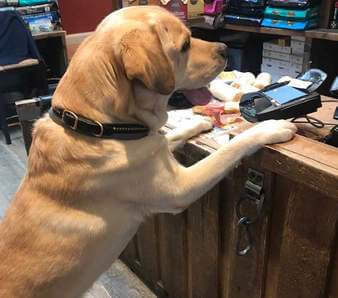
One of the most exciting aspects of dog ownership is seeing your dog’s curiosity and excitement when they receive their dog toys. You’ll want to get dog bones for them to chew on, dog beds, a retractable dog leash or a rope leash, collars, harnesses, and many more.
You can shop online right at your fingertips or visit pet supply shops in your town or city.
DON’T MISS: What To Put On Rope Burn From Dog Leash?
12. Find the right dog food
Finding the best dog food can be overwhelming since there’s so much dog food to consider. Start by learning the basics of canine nutrition and choose a diet that is complete, balanced, and healthy.
If your furry friend is doing well on the dog food you’re giving her, then it’s a sign that the diet works. When it comes to dog food, there is no one right answer.
Some owners may be bringing home adult dogs. If this is the case, find out from the previous owner what food they’ve been eating. You’ll have to decide whether you want them to continue that diet or transition to new diet options.
Visit your veterinarian if you have any questions regarding the food you’re giving your pooch. They will confirm if the diet meets your canine’s nutritional needs. Keep in mind that specific nutrients are needed at different life stages in order for your four-legged friend to thrive.
13. What if my dog won’t eat?
It’s normal for some dogs to stop eating when they’re in a new environment. If that is the case with your new pooch, you could start by feeding them food they’re familiar with or provide a variety of food options.
Speak with your vet to see if rotating food once a month and adding food toppers would help. Food topper helps make the meals more appealing. Before you place the dog bowl down, add in the food topper.
Avoid adding in the food topper after your dog has refused the food because it may cause them to pick up bad habits of learning to hold out for tastier additions to the food before finally eating.
Many dogs (mine included) enjoy Blue Wilderness Trail Toppers because it contains no by-products, artificial flavors, or preservatives. It’s also a healthy and holistic treat for your dog. They come in a variety of dog gravy flavors including chunky salmon, beef, chicken, and duck.
Try to establish specific meal times. For instance, one at 7 am and one at 7 pm. During mealtime, set a time limit of about 30 minutes to finish the food. This will increase their sense of urgency to eat. Make mealtime fun. Use a dog puzzle feeder instead of a dog bowl. You’ll be surprised at how well this works.
14. Is it ever too late to start training a dog?
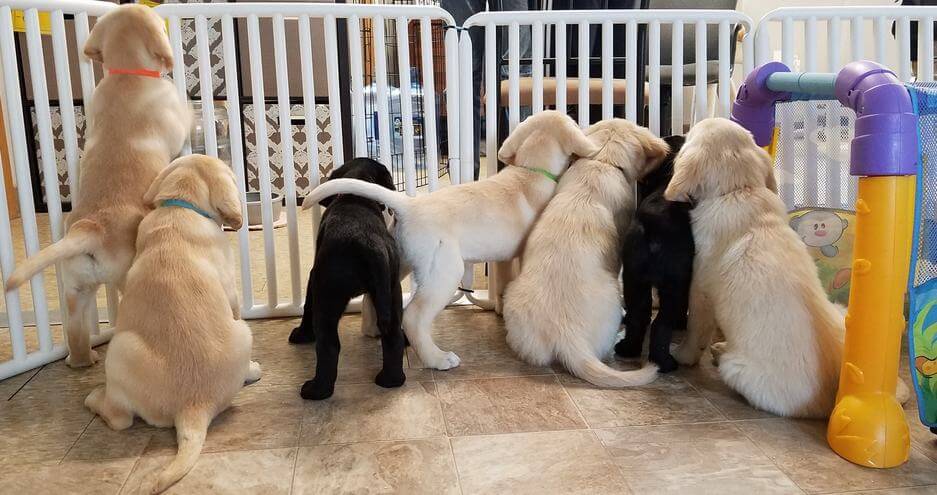
Even if you’re bringing home an adult dog, it’s never too late to start training them. Proper dog training is crucial because it provides them with a sense of structure. Both you and your four-legged friends will be happier in the long term. It will also enhance the harmonious and special bond between you two.
Start by taking 15 to 30 minutes each day to work through all the essential dog training steps and basic commands. Use a dog crate if they don’t understand yet that your home is a no-potty zone. It’s ideal to crate train your pups within the first few days of arriving home.
During this time, you could set up a pee pee pad in the dog crate or in the confinement area. Continue to take your dog outside and give them treats each time they potty. They will learn that the correct behavior is to potty outside.
15. Prepare for behavioral problems
At some point during dog ownership, many owners will have to deal with some kind of behavioral problems with their dogs. This is normal. Some simple behavioral problems include excessive barking or destructive chewing.
You may also encounter more serious issues like separation anxiety or aggression. New pups may urinate inappropriately out of nervousness. Sometimes uncontrolled urination may be a sign of a health issue and not necessarily a behavioral one. If you’re not sure, check with your vet.
Learn about canine behavioral problems so you know how to approach the situation when it arises. You can hire a certified professional dog trainer or consultant to help you. Do not wait until the issues get really bad. Early intervention is key.
16. Prepare for dog illnesses
Over their lifetimes, all dogs will encounter health problems. Some are common health issues while others are more serious. Routine visits to the vet will help you catch the issues early on. Daily exercise and a healthy diet will help as well.
17. Be a responsible dog owner
Becoming a dog owner means you are committing to your dog for life and accepting responsibility for their actions. You will need to take proper care of them while also respecting your community.
If you’re looking for a pet gate that converts to a freestanding gate, a room divider, or a pet pen, the hardwood Richell Convertible Elite Pet Gate is the solution.
Whether you have small or large dogs, the convertible pet gate provides different dimensions based on your needs. If you have a growing puppy and no longer need it, the pet gate can be folded for storage.
One of the great features of this retractable dog gate is the lockable gate door. It allows easy access from one room to another without having to move the entire gate.
Richell Convertible Elite Pet Gate Key Features:
- Comes in 4-Panel or 6-Panel, depending on your needs
- Great for all dog size
- Hardwood pet gate
- Convertible: Converts from free standing pet gate to a room divider to a pet pen
- A lockable gate door allows easy movement from room to room
- Specifically designed cap locks the panels in place at 90 and 180-degree angles which provides extra stability
What customers are saying:
Pros
- Many pet owners love how large, sturdy, and stable the free-standing gate is.
- The door mechanism is impressive and it keeps the door closed.
- Dog owners praised how easy it is to use the retractable dog gate. They lift the gate vertically and it opens right up. When they want the gate to stay closed, they simply push it in.
- Some owners have had this gate for years and recommend it to anyone looking for a dependable gate that also looks nice in their home.
- The convertible pet gate is easy to assemble. There are many configurations possible and can be folded up and put away.
Cons
- A few customers pointed out that disassembling the gate can be quite difficult due to the design of the pins.

With over five years of specialized experience as an animal writer, my expertise lies in dog nutrition, health, behavior, grooming, and training. I am dedicated to delivering helpful and informative content that caters to the well-being of our furry friends. My primary goal is to empower pet owners with knowledge and ensure our canine companions thrive in health and happiness. In my free time, I love volunteering at local dog rescue centers.
